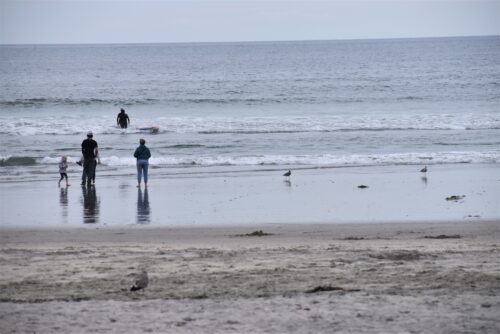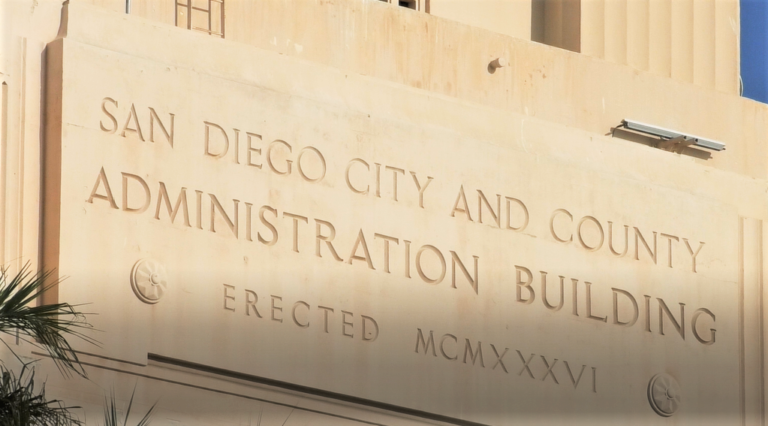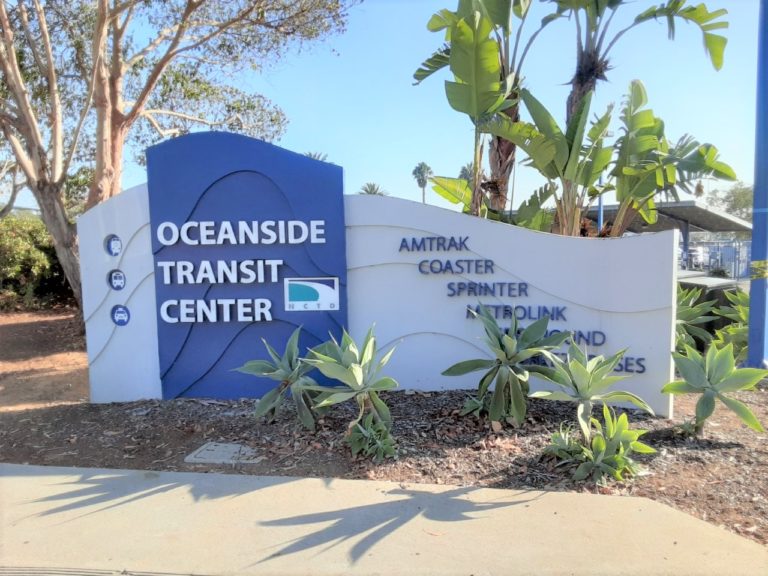Final Re:Beach workshop demonstrates three options for Oceanside beaches

By SDCN Editor
Oceanside, CA–Last week, the city of Oceanside, in partnership with GHD and Resilient Cities Catalyst, hosted its final public workshop for RE:BEACH, Oceanside’s Coastal Resilience Competition.
RE:BEACH brought together three design teams from around the world to develop innovative sand retention pilot projects for the city of Oceanside. One team and its winning design will be selected to move into the final engineering and permitting phases. Over 150 community members joined the design teams to review their final proposals and consider the three distinct options to preserve the future of Oceanside’s sandy beaches.
“The designs resulting from this competition exemplify ideas from prominent coastal specialists from across the globe, and we’ve brought forth tangible solutions for responsibly restoring and sustaining sand on our coastline,” said Jayme Timberlake, Oceanside’s Coastal Zone Administrator.
The RE:BEACH project brought awareness to the public and to the region about the city’s coastal management needs, and allowed for an opportunity to capture community feedback on the proposed solutions.
“What we saw in all three public workshops was a prominent commitment by the community to be part of the process,” Timberlake said.
Over the past six months, each design team presented a variety of sand retention concepts and made adaptations based on feedback from in-person discussions and online responses. Over 600 people attended the three community workshops, resulting in more than a thousand comments on the project website and in person, which directly influenced the final designs.
Deltares/MVRDV: Green Dream Peninsula
The Dutch team’s design would pilot the use of a natural peninsula structure, constructed out from the existing coastline. Utilizing the existing rock revetement, new boulders, and a new quarry run, this peninsula would jut out approximately 360 feet in length and 500 feet in descending width without obstructing ocean views. Each concept assumes 300,000 cubic yards of sand nourishment that would be in addition to the boulders and other rocks to create the infrastructure and connect to the wetland restoration project to the east to allow rainwater flow. The space would allow for increased recreation opportunities and environmental enhancement.
SCAPE/ESA: Dunepark/Hybrid Beach
This team’s design could extend the existing 5-30 feet of usable beach area to 40-100 feet by transforming an existing playground, lawn, and Strand area into a dune area (keeping The Strand), supported by cobble crests and nearshore reefs, the dry sandy area would be increased. The hybrid beach alternative would create a walking path through the dune area as well as dedicated sandy walking paths to the shore through the cobble crests. Supported by nearshore underwater reefs, this design alternative utilizes the existing environment to maximize success.
International Coastal Management: Living Speed Bumps
Taking their success on Australia’s Gold Coast, this approach outlines creating two headlands on the beach with low permeable berms and an offshore eco-engineered reef to support beach growth. The “Living Speed Bump” would allow for increased recreational space, vegetation, walkways, and restrooms. The berms and underwater reefs would allow sand to gather sustainably between the two-speed bumps, widening the dry sandy beach space.
“RE:BEACH is more than just a project; it’s a shared vision for a sustainable and vibrant coastal future that the City expects will be enjoyed by current and future generations. At this stage in RE:BEACH, the solutions being provided by the Design Teams offer not only sand retention solutions but also guidance on a long-term coastal management strategy that we will need to adopt,” said Timberlake at the closing of the third public workshop.
The Design Competition is supported by a project team, an internal city team, and a Jury—comprised of experts from across the State of California and community representatives in Oceanside—whose input, guidance, and expertise, in addition to hundreds of public comments, helped to inform the final designs produced by each team.
On January 31, the Oceanside Council will hold a workshop at 5:30 p.m. in the city council chambers. At the meeting, the selected design will be presented for city council consideration. One approved pilot project will move directly into the engineering and permitting phases.






